Photographs: Raj Patidar/Reuters. A K Bhattacharya
The UPA-II may not talk about this, but it continues to implement its programme to revive ailing PSUs by investing fresh capital.
In its second term, the Manmohan Singh-led United Progressive Alliance (UPA) has pressed the accelerator on disinvestment of government equity in public sector undertakings (PSUs).
In 2009-10, it raised about Rs 23,500 crore through the sale of government equity in a variety of PSUs. In the current year, if all goes well, the government's disinvestment programme may well fetch over Rs 60,000 crore for the exchequer.
Image: The billboard reads "Congress Inflation Juice shop - one and only shop selling pure poor man's juice".
...
The other face of UPA's PSU policy
Image: India's public sector bank employees during a strike against divestment in Hyderabad.Photographs: Krishnendu Halder/Reuters.
In five years between 2004 and 2009, the UPA government managed disinvestment of equity only in a few PSUs fetching about Rs 8,500 crore for the exchequer, compared to over Rs 28,000 crore mobilised in the previous five years by the Vajpayee-led National Democratic Alliance government.
...
The other face of UPA's PSU policy
Image: Students make a formation of the new symbol of the Indian rupee at a school in Chennai.Photographs: Reuters.
Thus, the government no longer needs to credit disinvestment proceeds to the Fund, which was set up in 2005 to meet the Left parties' demand that disinvestment money be used only for strengthening the public sector.
Finance Minister Pranab Mukherjee got an approval to use disinvestment proceeds to meet the government's overall expenditure needs and reduce its fiscal deficit.
There is no doubt that the UPA, in its second term, has taken full advantage of the absence of any pressure from the Left parties and has gone ahead with disinvestment without any hindrances.
...
The other face of UPA's PSU policy
Image: Women attend a rally organised by the Communist Party of India.Photographs: Adnan Abidi/Reuters.
Take for instance a high-level committee called the Board for Reconstruction of Public Sector Enterprises, headed by a person who holds the rank of a minister of state. It was set up in December 2004 to recommend measures for strengthening the PSUs, which were financially weak or incurring losses.
...
The other face of UPA's PSU policy
Image: 10 PSUs set for divestment.Indeed, the Board has held as many as 84 meetings since its formation and sent recommendations in respect of 63 PSUs. Of these, only three recommendations are for closure.
As many as 45 PSUs are to be revived through a package of financial and non-financial measures, including restructuring of operations.
There are 10 PSUs which have been recommended for revival through disinvestment or formation of joint ventures with other state-owned enterprises. The remaining five have been recommended for revival through merger with other PSUs.
...
The other face of UPA's PSU policy
Image: Supporters of India's ruling Congress party.Photographs: Krishnendu Halder/Reuters.
The total cost of offering such financial assistance to these 42 PSUs comes to about Rs 23,612 crore (Rs 236.12 billion). Mind you, the UPA government has mobilised only Rs 32,000 crore (Rs 320 billion) through its disinvestment programme until March 2010.
In other words, what it has invested in an attempt to revive ailing PSUs is only a little less than the amount it mobilised during this period by way of disinvestment proceeds.
...
The other face of UPA's PSU policy
Image: Workers at a coal field.Photographs: Reuters.
The UPA-II may not talk about this, but it continues to implement its programme to revive ailing PSUs by investing fresh capital with the same vigour it had showed in its first term.
...
The other face of UPA's PSU policy
Image: An audit is needed.If over Rs 23,000 crore (Rs 230 billion) has been spent on 42 financially weak PSUs in the last six years, the government should also undertake an audit to check and find out how many of these ailing companies have turned the corner or if it is simply a case of more good money going down the drain.


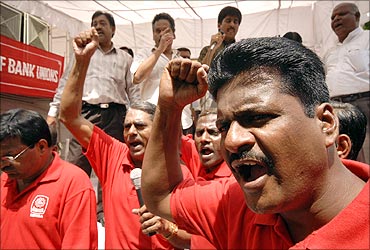
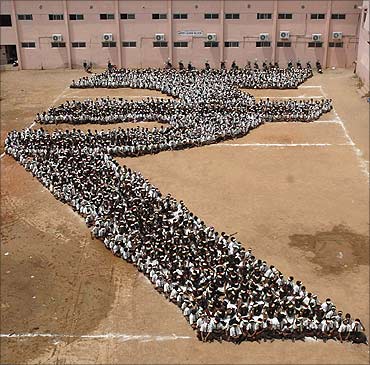
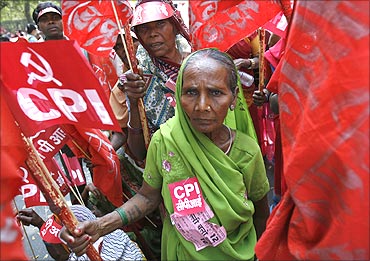

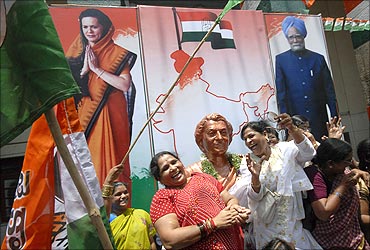
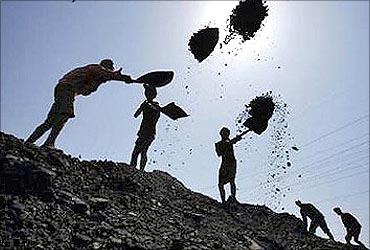


article